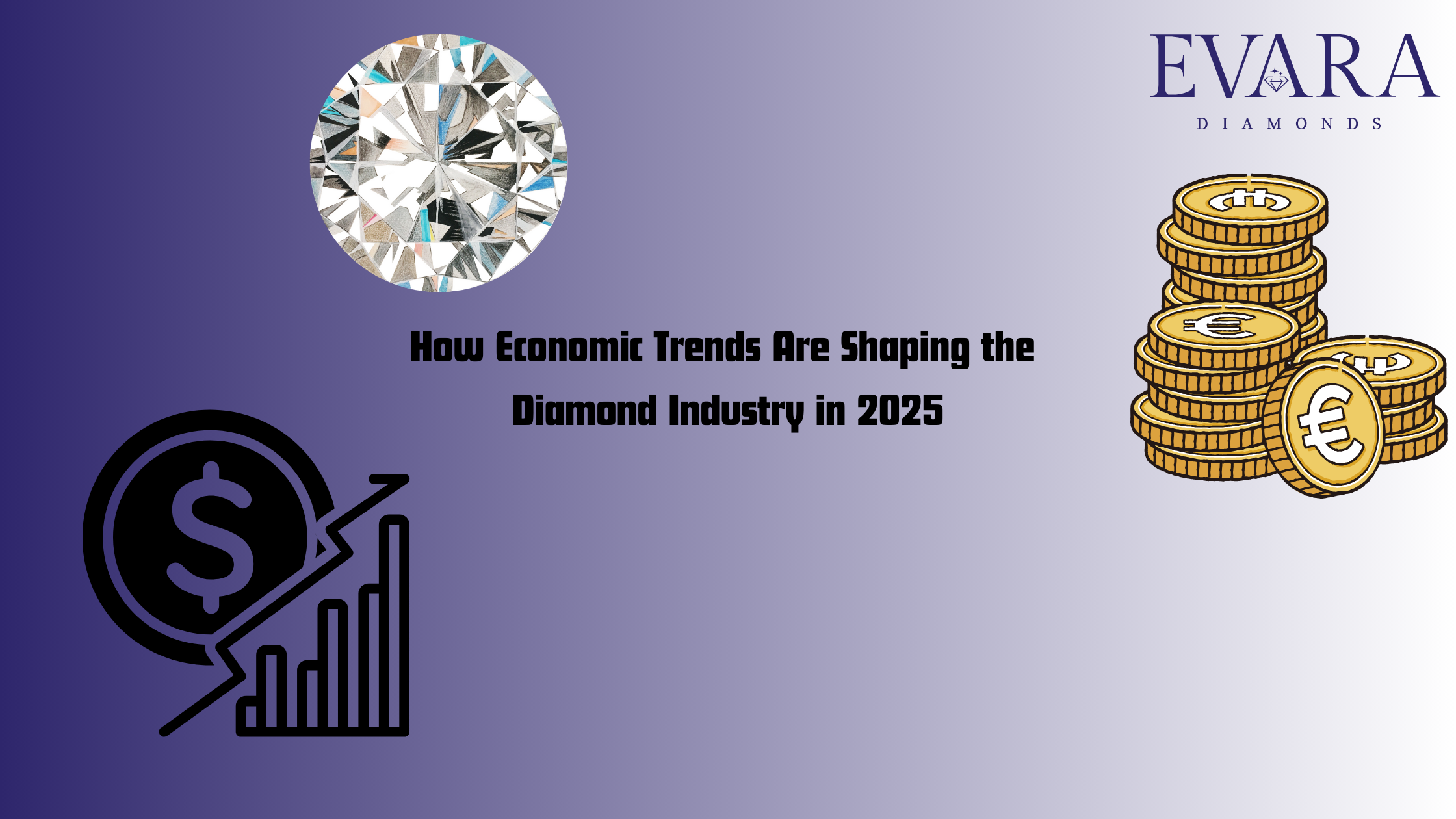How Economic Trends Are Shaping the Diamond Industry in 2025

Economic Trends Are Shaping the Diamond Industry:
As we step further into 2025, the diamond industry stands at the crossroads of tradition and transformation. Influenced by global economic shifts, evolving consumer behavior, and technological innovation, the landscape of natural and lab-grown diamonds is undergoing a dynamic evolution.
In this blog, we explore the key economic trends that are shaping the diamond industry in 2025—and what they mean for miners, manufacturers, retailers, and consumers.
1. Global Economic Recovery and Luxury Spending Rebound – Economic Trends Are Shaping the Diamond Industry
After years of volatility stemming from the pandemic and geopolitical tensions, 2025 marks a year of cautious optimism. With inflation stabilizing in many parts of the world and consumer confidence gradually rebounding, luxury spending is seeing a resurgence—especially in emerging markets like India, China, and the Middle East.
What it means for the diamond industry:
-
An increase in demand for engagement rings and bridal jewelry.
-
Revival of discretionary purchases, such as fashion-forward diamond pieces.
-
A renewed interest in high-value natural diamonds as long-term investments.
2. The Rise of Gen Z and Millennial Buyers
Younger consumers are making up a growing percentage of luxury buyers in 2025. These digital-first, values-driven generations prioritize transparency, ethical sourcing, and personalization.
What it means for the diamond industry:
-
A shift toward brands that offer sustainability, traceability, and purpose.
-
Greater demand for storytelling—consumers want to know where their diamonds come from and what they stand for.
-
Customizable and lab-grown diamond pieces are gaining popularity for their ethical appeal and affordability.
3. Fluctuations in Natural Diamond Prices
After a period of inflation and supply chain disruption, the natural diamond market is beginning to stabilize. However, prices remain sensitive to global mining output, geopolitical unrest, and competition from lab-grown alternatives.
Key drivers in 2025:
-
Continued reduction in rough diamond output from major mines.
-
Strategic stockpiling and release of inventory by mining giants.
-
Growing premium on rare, colored, and high-clarity natural diamonds.
4. Digital Transformation & Direct-to-Consumer (DTC) Models
E-commerce continues to dominate the retail landscape in 2025. Virtual try-ons, personalized shopping experiences, and AI-powered recommendations are the norm, not the exception.
Economic Trends Are Shaping the Diamond Industry:
-
DTC brands are thriving by cutting out the middlemen and offering competitive pricing.
-
Social media and influencer marketing remain key to brand discovery.
-
Blockchain-backed diamond certification is gaining traction for its transparency.
5. Sustainability and Ethical Sourcing as Economic Drivers
Consumers today are not just buying diamonds—they’re buying into values. Companies that invest in responsible sourcing, carbon neutrality, and giving back to local communities are winning trust and loyalty.
Economic Trends Are Shaping the Diamond Industry:
-
Carbon-neutral diamond brands are gaining market share.
-
Jewelry made from recycled metals and responsibly mined stones is becoming the standard.
-
ESG (Environmental, Social, and Governance) metrics are influencing investor interest in diamond companies.
Final Thoughts
The diamond industry in 2025 is more interconnected with the global economy than ever before. Success today is no longer just about carats and cuts—it’s about clarity of values, innovation, and adaptability. As consumers become more informed and selective, brands that can evolve with these economic trends will be the ones that shine brightest.